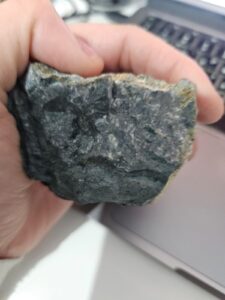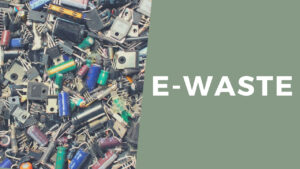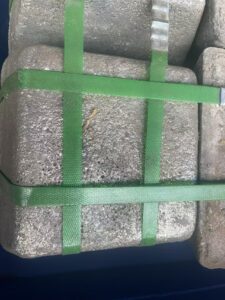I worked my way through the Human Rights Watch report this afternoon: “The Hidden Cost of Jewellery Human Rights in Supply Chains and the Responsibility of Jewelry Companies.” The following article is intended as a response to the report’s findings.
By way of background, I’ve spent the past 12 years photographing artisinal and small scale mines around the world. At last count, I had worked in around 30 different countries with the overall aim of producing a major documentary on artisinal mining which aims to document,in an anthropological context, the lives of many of the some 30 million men, women and children involved in this activity. The documentary will capture many of the different commodities, cultures, environments and topographies in some of the world’s most difficult and spectacular places.
I’ve been conflicted in this work for quite some time. I sit back and watch many NGOs and interest groups all take a position on whether this activity is good or bad. Most of the NGOs and charities affiliated with the sector take the view that it is bad. My views are a little different. Because like most things in life there are few areas of black and white. Just lots and lots of shades of grey.
A large ethical jewellery industry has evolved in the developed world in response to the demands of consumers and jewellery makers that gold and diamonds be ethically sourced. Meaning broadly that these commodities be sourced free of human rights, environmental and other abuses. And the report argues strongly for improved sourcing practices by all jewellery companies to help mitigate against the risk of human rights abuses of those helping to produce these resources.
It is commonly estimated that there are around 30 million men, women and children working in the ASM sector around the world. Most of those being in developing countries. My experience has been that most of the people I have come across have chosen to work in this field. Mainly because of the prospect of higher incomes relative to what they might otherwise earn if they stayed in the villages and in the farms and fields. It’s no different to most in the developed world that are all working longer hours in jobs they hate for the prospect of getting ahead of everyone else. We are all sacrificing the lives we are living currently for the prospect of better lives for ourselves and our families.
The problem that I have with much of the criticism of this sector is that most of that criticism is coming from the developed world. And it is the wealthy, developed, world that is seeking to impose its own view of the world on those in less privileged positions. A form of colonialism from afar perhaps. Because I’ve also wondered for quite some time whether the privilege that we enjoy in the developed world is enjoyed at the expense of the less developed world…. Not an assertion. More just an unease.
The Human Rights Watch report argues for the application of what are essentially developed world standards of human rights in the production of gold and diamonds. And that leading brands such as Cartier, Rolex and Signet, to name a few and the jewelry industry at large should not source product from those suppliers not meeting those standards. It refers explicitly to child labour, the rights of indigenous peoples, environmental degradation, human trafficking and conflict minerals.
It is well and good to have these elevated objectives. Noble in fact. But in seeking to achieve this good, are we really doing more harm? I have watched the world’s largest resource and oil and gas companies in my home country become ridiculously OH&S (Occupational Health and Safety Driven) driven. And this has largely eliminated small and medium sized enterprises in their areas of operation from being able to benefit from the benefits of those mines because of the onerous health and safety compliance obligations. Only those larger companies with the resources to meet these compliance obligations are able to compete for work. And so the smaller, less resourced, organisations miss out and the benefits don’t really flow to the local downs. They all go back to the cities. While the towns are left with inflated real estate prices and the locals can’t access tradespeople because of the costs.
The same thing risks happening here in the ASM sector. The imposition of developed world standards, without more, on the third world, creates a serious impetus for the direction of work and economic opportunities away from these poorer impoverished countries to richer developed world economies with plenty of wealth as it is. We might think that having kids working in mines is bad per se, but some families are so poor that they can’t afford to survive without economic contributions from their children. And when production and economic opportunities are directed away from these places because of this, these people have even less means to survive. They lose the upward mobility opportunities that artisanal mining provides and they lose a valuable source of income.
Upward mobility in artisinal mining works in so many different ways. The finding of gold or diamonds or whatever the commodity it is brings a rusk of people. Some learn about the commodity, albeit often in undesirable ways. But the influx of people brings money because commodities are being sold. Micro-credit providers emerge. Those people learn about dealing in money. Others come and sell goods and services. So they learn about running businesses. Maybe they even keep accounts. So they learn about book-keeping. Fuel providers come in so they learn about working with petrol and diesel. The point being that all of these places become hives of activity that stimulate skills development far beyond what they would otherwise ever obtain. The bridge then to even bigger things down the track becomes far less.
So what I am arguing is that the solution should not be a scorched earth one. If the developed world wishes to impose its standards of human rights on those in the undeveloped world then it should do much more than shift production to those areas that meet its own elevated view of the world. A position they’re able to adopt from one that is greatly privileged. These larger companies have an obligation to work with third world communities to lift standards and bring these people up to the levels that it is trying to push onto others around them. Not abandon them and move sourcing to places that are the most cost effective and simple.
And it is hard to see that this is happening at the minute. If the Tiffany & Co. sourcing numbers in the Human Rights Watch Report are correct. Namely that “twenty-seven percent of its gold comes from a single mine in Utah, the Bingham Canyon Mine, and the remaining 73 percent comes from recycled sources.”
This gold may come from the developed world definition of ethical sources but are they really promoting greater equality in the division of the pie or instead consolidating the cream on top of the majority portion held by the wealthiest few percent?





